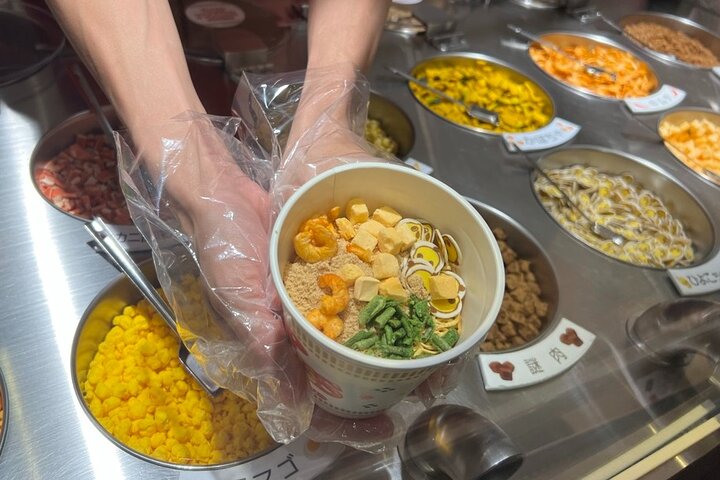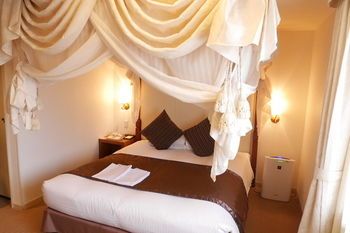Why choose this Yokohama tour ?
Meet your guide in Yokohama and enjoy an efficient, one-day tour of Tokyo accompanied by a government-licensed and experienced English-speaking guide! Your guide will introduce both modern and traditional aspects of this dynamic Japanese capital.
Tokyo is where you can experience both modern and traditional, and your experienced private guide will help you efficiently enjoy a full day in this dynamic Japanese capital. Let us know what you would like to experience, and we will customize a eight-hour tour that’s best for you! You usually can visit about 4 to 6 sights in a day in one or two areas of the city.
Note*: The National Government Licensed Guide Interpreter certification is issued by the Japanese government requires a good knowledge and understanding of Japanese culture and history.
Make the most of your Yokohama adventure
What makes Tokyo 8hr Private Tour with Licensed Guide from Yokohama a unique experience ?
Meet your guide in Yokohama and head to the world most exciting city Tokyo by train. You can meet your guide at the port in Yokohama as well!
The Imperial Palace is a popular destination for tours. The large garden area and outer walls of the old palace are open to the public. However, the inner area where the Royal family resides is private.
This beautiful and large garden in the center of Tokyo is famous for cherry blossoms.
Adults 500 (Group discount 400)
Seniors (65 and over) 250 ※Valid ID required. Please purchase a ticket at a staffed counter.
Students 250 ※Valid Student ID required. Please purchase a ticket at a staffed counter.
Children (junior high school students /15 and under) FREE
Visit one of the busiest crossings in the world and see the hustle and bustle of real Tokyo.
One of the most famous areas of Tokyo. The temple and shopping street have the feel of old Tokyo
Meiji Shrine (明治神宮, Meiji Jingū) is a shrine dedicated to the deified spirits of Emperor Meiji and his consort, Empress Shoken. Located just beside the JR Yamanote Line’s busy Harajuku Station, Meiji Shrine and the adjacent Yoyogi Park make up a large forested area within the densely built-up city. The spacious shrine grounds offer walking paths that are great for a relaxing stroll.
The shrine was completed and dedicated to the Emperor Meiji and the Empress Shoken in 1920, eight years after the passing of the emperor and six years after the passing of the empress. The shrine was destroyed during the Second World War but was rebuilt shortly thereafter.
Akihabara (秋葉原), also called Akiba after a former local shrine, is a district in central Tokyo that is famous for its many electronics shops. In more recent years, Akihabara has gained recognition as the center of Japan’s otaku (diehard fan) culture, and many shops and establishments devoted to anime and manga are now dispersed among the electronic stores in the district. On Sundays, Chuo Dori, the main street through the district, is closed to car traffic from 13:00 to 18:00 (until 17:00 from October through March).
Koishikawa Korakuen (小石川後楽園, Koishikawa Kōrakuen) is one of Tokyo’s oldest and best Japanese gardens. It was built in the early Edo Period (1600-1867) at the Tokyo residence of the Mito branch of the ruling Tokugawa family. Like its namesake in Okayama, the garden was named Korakuen after a poem encouraging a ruler to enjoy pleasure only after achieving happiness for his people. Koishikawa is the district in which the garden is located in.
Hama Rikyu (浜離宮, Hama Rikyū), is a large, attractive landscape garden in central Tokyo. Located alongside Tokyo Bay, Hama Rikyu features seawater ponds which change level with the tides, and a teahouse on an island where visitors can rest and enjoy the scenery. The traditionally styled garden stands in stark contrast to the skyscrapers of the adjacent Shiodome district.
Explore the old fish market in Tokyo!
Harajuku (原宿) refers to the area around Tokyo’s Harajuku Station, which is between Shinjuku and Shibuya on the Yamanote Line. It is the center of Japan’s most extreme teenage cultures and fashion styles, but also offers shopping for adults and some historic sights.
The focal point of Harajuku’s teenage culture is Takeshita Dori (Takeshita Street) and its side streets, which are lined by many trendy shops, fashion boutiques, used clothes stores, crepe stands and fast food outlets geared towards the fashion and trend conscious teens.
Rikugien (六義園) is often considered Tokyo’s most beautiful Japanese landscape garden alongside Koishikawa Korakuen. Built around 1700 for the 5th Tokugawa Shogun, Rikugien literally means “six poems garden” and reproduces in miniature 88 scenes from famous poems. The garden is a good example of an Edo Period strolling garden and features a large central pond surrounded by manmade hills and forested areas, all connected by a network of trails.
Yoyogi Park (代々木公園, Yoyogi Kōen) is one of Tokyo’s largest city parks, featuring wide lawns, ponds and forested areas. It is a great place for jogging, picnicking and other outdoor activities.
Although Yoyogi Park has relatively few cherry trees compared to other sites in Tokyo, it makes for a nice cherry blossom viewing spot in spring. Furthermore, it is known for its ginko tree forest, which turns intensely golden in autumn.
Sensoji (浅草寺, Sensōji, also known as Asakusa Kannon Temple) is a Buddhist temple located in Asakusa. It is one of Tokyo’s most colorful and popular temples.
The legend says that in the year 628, two brothers fished a statue of Kannon, the goddess of mercy, out of the Sumida River, and even though they put the statue back into the river, it always returned to them. Consequently, Sensoji was built nearby for the goddess of Kannon. The temple was completed in 645, making it Tokyo’s oldest temple.
Roppongi Hills is one of the best examples of a city within the city. Opened in 2003 in the heart of Tokyo’s Roppongi district, the building complex features offices, apartments, shops, restaurants, a hotel, art museum, observation deck and more. The office floors are home to leading companies from the IT and financial sectors, and Roppongi Hills has become a symbol of the Japanese IT industry.
At the center of Roppongi Hills stands the 238 meter Mori Tower, one of the tallest buildings in the city. While most of the building is occupied by office space, the first few floors have restaurants and shops and the top few floors house an observation deck and modern art museum that are open to the public.
Tour Description & Additional Info:
- Service animals allowed
- Public transportation options are available nearby
- Infants and small children can ride in a pram or stroller
- Transportation options are wheelchair accessible
- Wheelchair accessible
- Suitable for all physical fitness levels
- This is a walking tour. Meet up and Drop off are on foot and part of the tour time.
- This is a walking tour. Pick up is on foot.
Options To Choose for Your Trip:
- Tokyo 8hr Private Tour with Licensed Guide from Yokohama
Add
Pickup included
Tokyo 8hr Private Tour with Licensed Guide from Yokohama Inclusions:
Included with Your Ticket
- Customizable Walking Tour of your choice of 4-6 sites from ‘What to expect’ list
- Meet up with guide on foot within designated area of Yokohama
- Licensed Local English Speaking Guide
Not Included
- Transportation fees, Entrance fees, Lunch, and Other personal expenses
- Private Vehicle
- You cannot combine multiple tour groups.
- Guide Entry fees are only covered for sights listed under What to Expect.
Trending Yokohama Nearby Tours Likely To Sell Out
Special Instructions:
- This Tour is Provided by Japan Guide Agency.
- Tour Timezone & Starts at Asia/Tokyo.
- Mobile or paper ticket accepted.
- All sales are final. No refund is available for cancellations.
- This Tour is Rated 4.5 Stars based on 33 valid reviews on VIATOR.
- Minimum 1 Travelers is required to book.
- Maximum 10 Travelers is accepted for booking.









